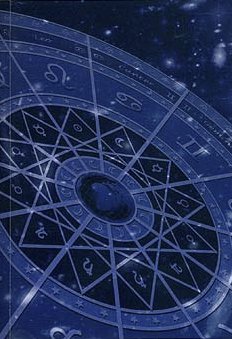Ashrayin, Ashrayi, Āśrayī, Āśrayin: 11 definitions
Introduction:
Ashrayin means something in Hinduism, Sanskrit, Marathi. If you want to know the exact meaning, history, etymology or English translation of this term then check out the descriptions on this page. Add your comment or reference to a book if you want to contribute to this summary article.
The Sanskrit terms Āśrayī and Āśrayin can be transliterated into English as Asrayi or Ashrayi or Asrayin or Ashrayin, using the IAST transliteration scheme (?).
In Hinduism
Jyotisha (astronomy and astrology)
Source: Wisdom Library: Brihat Samhita by VarahamihiraĀśrayin (आश्रयिन्) refers to “those who are living”, according to the Bṛhatsaṃhitā (chapter 5), an encyclopedic Sanskrit work written by Varāhamihira mainly focusing on the science of ancient Indian astronomy astronomy (Jyotiṣa).—Accordingly, “If there should be both lunar and solar eclipses in one month, princes will suffer both from dissensions among their own army and from wars. [...] If Mars should be eclipsed by Rāhu [—the eclipsed or eclipsing lunar or solar disc as the case may be], the people of Āvanti, those living on the banks of the Kāverī and the Narmada [i.e., kāverī-narmadā-taṭa-āśrayin] and haughty princes will be afflicted with miseries. If Mercury should be so eclipsed, men living between the Ganges and the Yamunā, on the banks of the Sarayū and in the country of Nepāla, those living about the east sea and on the banks of the Śoṇa will suffer and women, princes, soldier boys and men of letters will perish”.

Jyotisha (ज्योतिष, jyotiṣa or jyotish) refers to ‘astronomy’ or “Vedic astrology” and represents the fifth of the six Vedangas (additional sciences to be studied along with the Vedas). Jyotisha concerns itself with the study and prediction of the movements of celestial bodies, in order to calculate the auspicious time for rituals and ceremonies.
Languages of India and abroad
Marathi-English dictionary
Source: DDSA: The Molesworth Marathi and English DictionaryĀśrayī (आश्रयी).—a That has sought the protection or support of; the refugee of.
Source: DDSA: The Aryabhusan school dictionary, Marathi-EnglishĀśrayī (आश्रयी).—a That has sought the protec- tion of. The refugee of.
Marathi is an Indo-European language having over 70 million native speakers people in (predominantly) Maharashtra India. Marathi, like many other Indo-Aryan languages, evolved from early forms of Prakrit, which itself is a subset of Sanskrit, one of the most ancient languages of the world.
Sanskrit dictionary
Source: DDSA: The practical Sanskrit-English dictionaryĀśrayin (आश्रयिन्).—a.
1) Resting with, dependent on.
2) Related to, concerning; तदाश्रयिणी कथा (tadāśrayiṇī kathā) V.3.1; K.213.
3) Resorting to; मयूरपृष्ठाश्रयिणा गुहेन (mayūrapṛṣṭhāśrayiṇā guhena) R.6.4; Ratnāvalī 2. अहमेत्य पतङ्गवर्त्मना पुनरङ्काश्रयिणी भवामिते (ahametya pataṅgavartmanā punaraṅkāśrayiṇī bhavāmite) Kumārasambhava 4.2.
-āśrayin m. A complementary detail. आश्रयिष्वविशेषेण भावोऽर्थः प्रतीयेत (āśrayiṣvaviśeṣeṇa bhāvo'rthaḥ pratīyeta) | MS.4.1.18.
Source: Cologne Digital Sanskrit Dictionaries: Benfey Sanskrit-English DictionaryĀśrayin (आश्रयिन्).—i. e. āśraya + in, adj., f. ṇī, 1. Seated, [Raghuvaṃśa, (ed. Stenzler.)] 6, 4. 2. Lodging, [Śākuntala, (ed. Böhtlingk.)] 78, 19.
Source: Cologne Digital Sanskrit Dictionaries: Cappeller Sanskrit-English DictionaryĀśrayin (आश्रयिन्).—[adjective] leaning on, attaching to; dwelling in (—°).
Source: Cologne Digital Sanskrit Dictionaries: Monier-Williams Sanskrit-English Dictionary1) Āśrayin (आश्रयिन्):—[from ā-śri] mfn. joining, attaching one’s self to
2) [v.s. ...] following, [Suśruta; Jaimini]
3) [v.s. ...] dwelling in, resting on, inhabiting, [Raghuvaṃśa; Śakuntalā; Ratnāvalī; Sāhitya-darpaṇa]
Source: DDSA: Paia-sadda-mahannavo; a comprehensive Prakrit Hindi dictionary (S)Āśrayin (आश्रयिन्) in the Sanskrit language is related to the Prakrit word: Āsai.
[Sanskrit to German]
Sanskrit, also spelled संस्कृतम् (saṃskṛtam), is an ancient language of India commonly seen as the grandmother of the Indo-European language family (even English!). Closely allied with Prakrit and Pali, Sanskrit is more exhaustive in both grammar and terms and has the most extensive collection of literature in the world, greatly surpassing its sister-languages Greek and Latin.
Kannada-English dictionary
Source: Alar: Kannada-English corpusĀśrayi (ಆಶ್ರಯಿ):—[adjective] depending on another.
--- OR ---
Āśrayi (ಆಶ್ರಯಿ):—[noun] one who seeks or is under another’s protection, support or care; a protégé; a refugee; a dependant.
Kannada is a Dravidian language (as opposed to the Indo-European language family) mainly spoken in the southwestern region of India.
See also (Relevant definitions)
Ends with: Apashrayin, Karyashrayin, Mancakashrayin, Parvatashrayin, Prashrayin, Samashrayin, Tadashrayin, Tatashrayin, Vrikshashrayin.
Full-text: Samashrayin, Parvatashrayin, Vrikshashrayin, Karyashrayin, Asai, Narmadatata, Kaveritata, Tatashrayin, Dravya, Ashraya, Adhara.
Relevant text
Search found 2 books and stories containing Ashrayin, Ashrayi, Āśrayī, Āśrayin, Asrayin, Āśrayi, Asrayi; (plurals include: Ashrayins, Ashrayis, Āśrayīs, Āśrayins, Asrayins, Āśrayis, Asrayis). You can also click to the full overview containing English textual excerpts. Below are direct links for the most relevant articles:
Vakyapadiya of Bhartrihari (by K. A. Subramania Iyer)
Verse 3.11.18 < [Book 3 - Pada-kāṇḍa (11): Saṅkhyā-samuddeśa (On Number)]
Verse 3.14.20 < [Book 3 - Pada-kāṇḍa (14): Vṛtti-samuddeśa (On Ccomplex Formation)]
Vaisesika Doctrines (in the Nyaya Works) (by Diptasree Som)